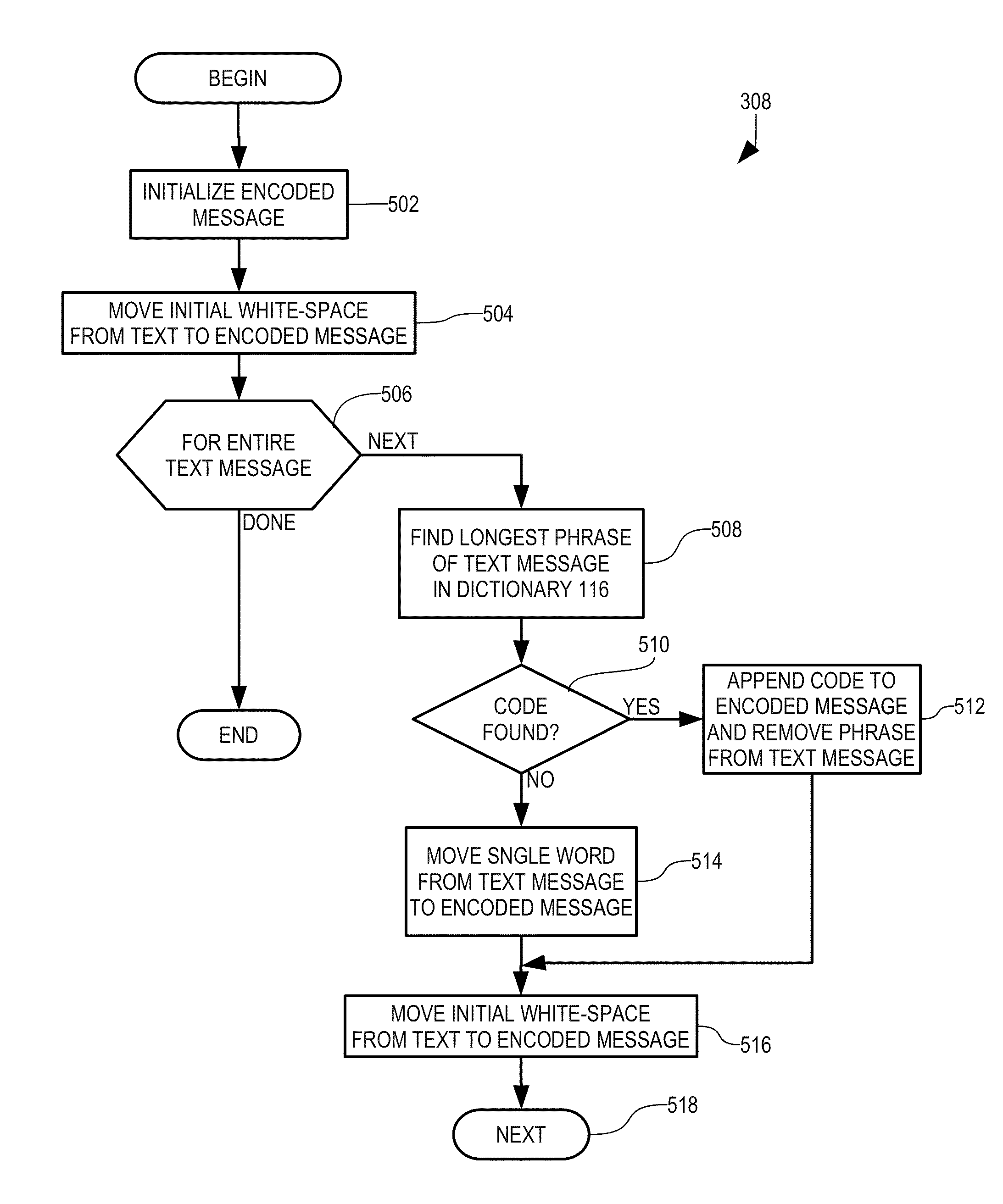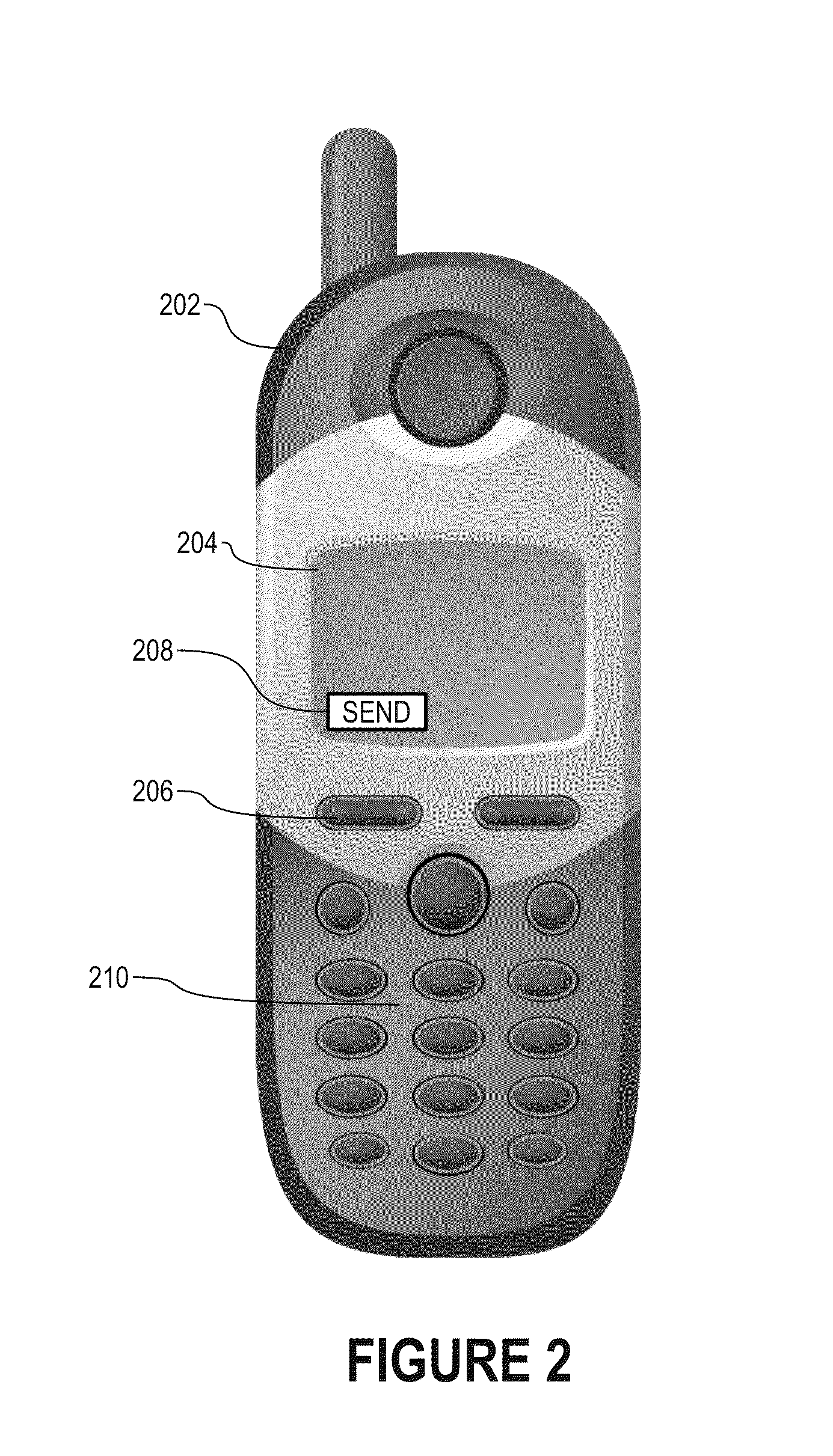Encoding and Decoding of Small Amounts of Text
a text and small amount technology, applied in the field of computer data storage and transmission, can solve the problems of cost-effective and most small text messages not being true, and achieve the effect of significant privacy
- Summary
- Abstract
- Description
- Claims
- Application Information
AI Technical Summary
Benefits of technology
Problems solved by technology
Method used
Image
Examples
Embodiment Construction
[0026]In accordance with the present invention, text data is encoded and decoded by using a predetermined dictionary 116 (FIG. 1) of words and phrases represented by respective codes to thereby obviate transmission of the dictionary along with the encoded text. The codes are constructed of the same characters with which the text data is constructed such that the message, once encoded to include codes rather than their respective associated words or phrases, is itself a text message.
[0027]Briefly, text is encoded by replacement of phrases thereof with representative codes from dictionary 116. Since the codes are generally shorter than the represented phrases, such encoding results in compression of the text. Conversely, decoding the message by replacing codes in the encoded message with phrases represented by the respective codes results in decompression and restoration of the text.
[0028]Dictionary 116 is predetermined in that dictionary 116 does not depend upon the particular text b...
PUM
 Login to View More
Login to View More Abstract
Description
Claims
Application Information
 Login to View More
Login to View More - R&D
- Intellectual Property
- Life Sciences
- Materials
- Tech Scout
- Unparalleled Data Quality
- Higher Quality Content
- 60% Fewer Hallucinations
Browse by: Latest US Patents, China's latest patents, Technical Efficacy Thesaurus, Application Domain, Technology Topic, Popular Technical Reports.
© 2025 PatSnap. All rights reserved.Legal|Privacy policy|Modern Slavery Act Transparency Statement|Sitemap|About US| Contact US: help@patsnap.com



